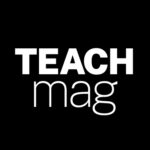Have you ever wondered where some English words originated? The English language has a large vocabulary that is cobbled together from many words borrowed from other countries.
Approximately 29% of foreign words come from French (ambulance, parachute, and sauce for example), another 29% have Latin origins (like agenda, circus, and data) and another 26% of the English language has Germanic origins (dollar, muffin, and Kindergarten). The Greek language makes up roughly 6% of our vocabulary, and we are continually adding to it from languages worldwide.
TEACH is the largest national education publication in Canada. We support good teachers and teaching and believe in innovation in education.


